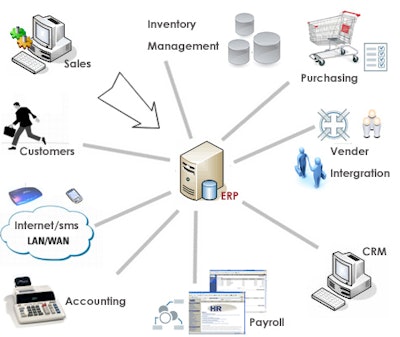
Today's editorial will be Part 1 of a 2 Part series by Andy Vabulas, CEO and Owner of I.B.I.S., Inc.& Brent Grover from Evergreen Consulting.
Trends in Technology
Technology-enabled trends are making this a challenging and exciting time to shop for distributor ERP (enterprise resource planning) software. It just so happens that many executives responsible for ERP systems are looking to update or replace their systems in the near future. This is because business is improving in most lines of trade, interest rates are low, and bank financing for capital expenditures is more available. Furthermore, distributors have postponed ERP investments for several years, so there is pent-up demand, and some firms have let themselves fall behind the recent releases of updates for their current ERP software.
Andy Vabulas |
More than ever, technology is playing a large role in the decision to upgrade. Consider a couple statistics that show just how much technology has worked its way into business, as well as our daily lives, over the last decade:
- At the end of December 2011, Facebook had 845 million monthly active users
- 35 percent of Americans own a smartphone
- The average American spends 39 hours per month actively online
Among all of the staggering trends in technology, there are three main developments that have serious implications for wholesale distributors. These are the cloud, big data and adoption rates.
The Cloud
The cloud has become a huge buzzword in recent years. The dramatic convergence of wireless communications and information processing has made it possible for businesses in the supply chain to avoid running software and storing their own data by accessing computing resources through networks. McKinsey Quarterly reports that SaaS (software as a service) is growing at a 17-percent annual rate. Even casual personal computer users are storing (and sharing with friends and colleagues) their photos, music and documents using someone else’s server. For economic and compatibility reasons, distributor ERP systems need to keep up with the movement to cloud computing by trading partners.
Brent Grover |
Next, it is reported that the mass of data is doubling every 18 months, yet another variance of Moore’s Law, which states that the number of transistors on a chip doubles about every two years. Capturing and analyzing this big data is a major challenge for distributors and their ERP systems. For example, Evergreen Consulting, a specialized consulting firm advising the wholesale distribution channel, analyzes millions of invoice line items and generates tens of thousands of price recommendations for each client. Then, line item profitability is calculated for hundreds of thousands of customer-item pairs. Many clients use business intelligence software to “drill down” into their data. They also use CRM software to keep track of interactions with thousands of customers.
Adoption Rates
Finally, the stunningly rapid adoption rate of newer technologies (social networks, mobile computing, etc.) by the public is paralleled by business users. Distributors, who are in the middle of the supply chain, need to keep pace with the fastest adopters at three levels: customers, suppliers and competitors. The judgment of executives is tested by the challenge of finding the right speed to avoid costly disruptions from moving too quickly versus the danger of falling behind. A major risk of selecting a new ERP system is betting on a vendor who does not have the foresight and resources to anticipate the future, as well as the flexibility to keep the distributor’s system ahead of the curve.
Understandably, these trends greatly affect the way a distributor does business. That’s why it’s crucial to select a proper ERP system and solution provider, which can help distributors adapt to new technologies of today and tomorrow.
Part 2 of the series continues here.






















